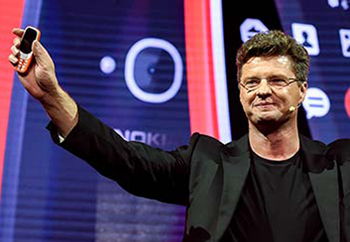Barcelona, Feb 27: Finnish brand Nokia, a former mobile star, launched three new Android smartphones and unveiled a revamped version of its iconic 3310 model more than a decade after it was phased out.
 Unlike the original, which was known for its sturdiness, the new Nokia 3310 will allow web browsing.
Unlike the original, which was known for its sturdiness, the new Nokia 3310 will allow web browsing.
The new version will bring back its predecessor's popular "Snake" game and distinctive ringtones, said Arto Nummela, the head of Finnish start-up HMD Global which will produce the phone under a licensing agreement with Nokia.
"The telephone will allow you to talk for 22 hours, ten times more than the original," he said during a presentation in Barcelona on the eve of the start of the Mobile World Congress, the world's biggest mobile phone show.
Launched in 2000, Nokia's original 3310 sold nearly 120 million units worldwide before it was discontinued in 2005, making it one of the world's best-selling mobile phones.
Analysts said resurrecting the popular model was a clever way for HMD Global to relaunch Nokia's brand.
"HMD launched three new smartphones and an iconic mobile. It is a way to create a halo effect around the other models by reviving talk about the Nokia brand," said Thomas Husson, a mobile analyst at Forrester.
In addition to the new 3310, HMD presented three new smartphones, the Nokia 3, Nokia 5 and Nokia 6 which will sell for different prices.
The Nokia 6 was already available in China and will now go on sale globally.
"We think (Nokia) could take 5 percent of the global smartphone market by the end of 2019. But it needs to get big quick or it won't work," said CCS Insight's device specialist and chief of research, Ben Wood.
Nokia was the world's top mobile maker between 1998 and 2011 but was overtaken by South Korean rival Samsung after failing to respond to the rapid rise of smartphones.
Its telephone brand remains widely recognised, especially in developing markets.





Comments
Add new comment